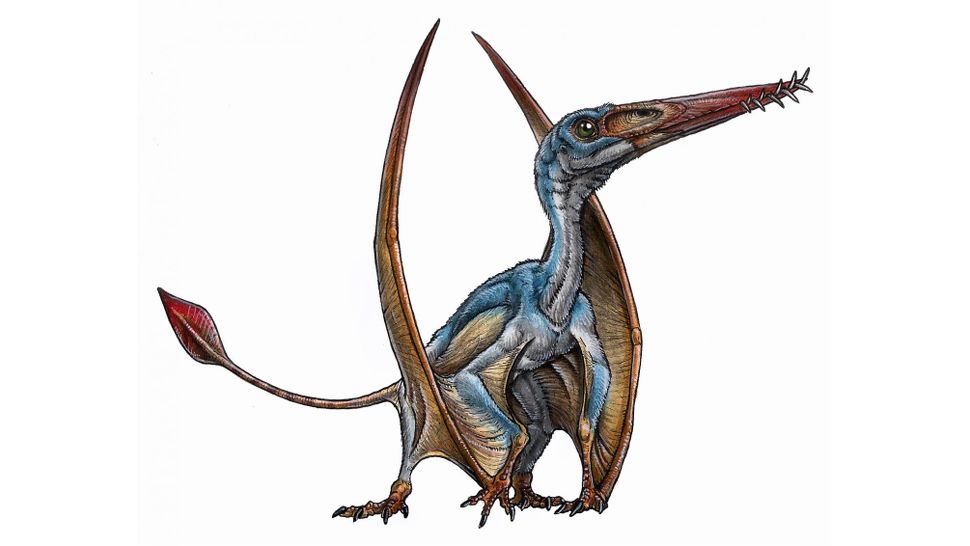Two Pterosaur Finds Are Helping to Untangle Their Family Tree
An intact skull and a pint-sized species offer clues to how these creatures evolved
/https://tf-cmsv2-smithsonianmag-media.s3.amazonaws.com/filer/6d/87/6d87cd3c-b640-4ee0-88e3-0a5b487c6726/1000585_1_0830-pterosaur-comparison_standard.png)
Pterosaurs come in many different shapes and sizes. These flying reptiles ruled the skies during the age of dinosaurs. But how they fit into evolutionary history has long confused scientists. Now two new species—one the brainiest and another among the smallest—are helping researchers rework the pterosaur evolutionary tree.
The first of these fossils was discovered in the Patagonia region of Argentina and has a surprisingly pristine skull. Delicate and light weight, pterosaur skulls are usually crushed before they fossilize—researchers have only ever found a few intact specimen.
They dubbed the species Allkaruen koi, which means ancient brain in the indigenous Tehuelche language, and made a detailed CT scan. This analysis allowed the researchers to reconstruct features of the 190-million-year-old animal’s brain and inner ear, according to a press release.
From these scans, the researchers hope to figure out how the pterosaur’s brain evolved over time and adapted to life on the wing. “Allkaruen, from the middle lower Jurassic limit, shows an intermediate state in the brain evolution of pterosaurs and their adaptations to the aerial environment,” Diego Pol, who is part of the research team, says in the release. “As a result, this research makes an important contribution to the understanding of the evolution of all of pterosaurs.”

The second pterosaur recently unveiled is a tiny creature, no bigger than a cat with a wingspan of around five feet, Eva Botkin-Kowacki reports for The Christian Science Monitor. The creature's fused vertebrae and bone structure indicate that the fossils come from mature animals not from juveniles of larger species, according to a press release.
The creature likely lived during the late Cretaceous period, 70 to 85 million years ago. But while tiny pterosaurs were common in earlier eras, they are absent from the fossil record at this late date. Many believe that by this time the giant pterosaurs dominated, with one species sporting a 32-foot wingspan. It was also thought that, in the late Cretaceous, birds filled the tiny creatures' niche.
“We’ve got a small pterosaur when everyone said they shouldn’t be there,” study co-author Elizabeth Martin-Silverstone tells Traci Watson at National Geographic.
But the researchers argue the new fossil suggests otherwise. The absence of juvenile pterosaurs in the fossil record from the larger species could mean that the remains from these tiny winged creatures just didn't survive to the present day. Martin-Silversone suggests that perhaps some of these missing fossils are currently lurking in museum and college collections, mislabeled or yet-to-be identified.